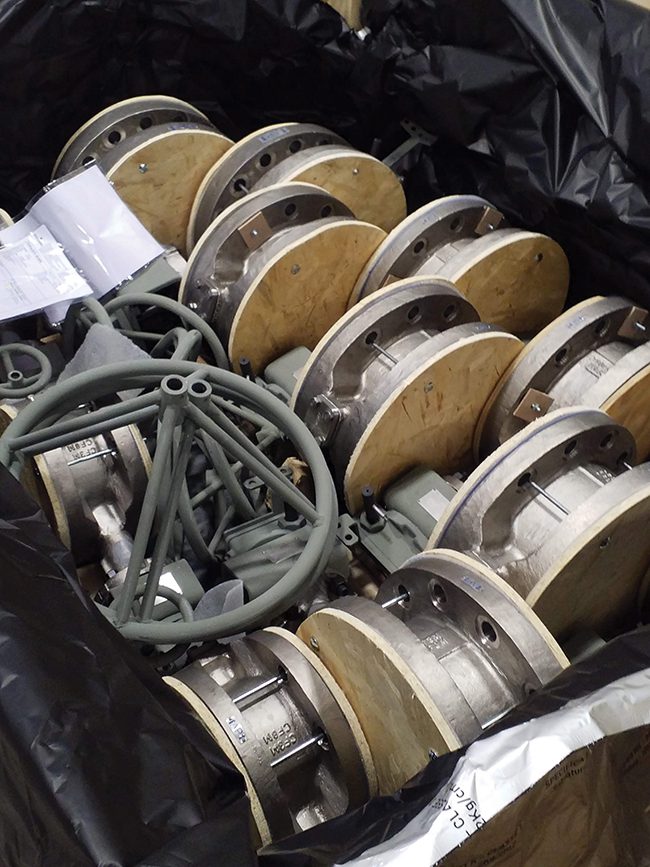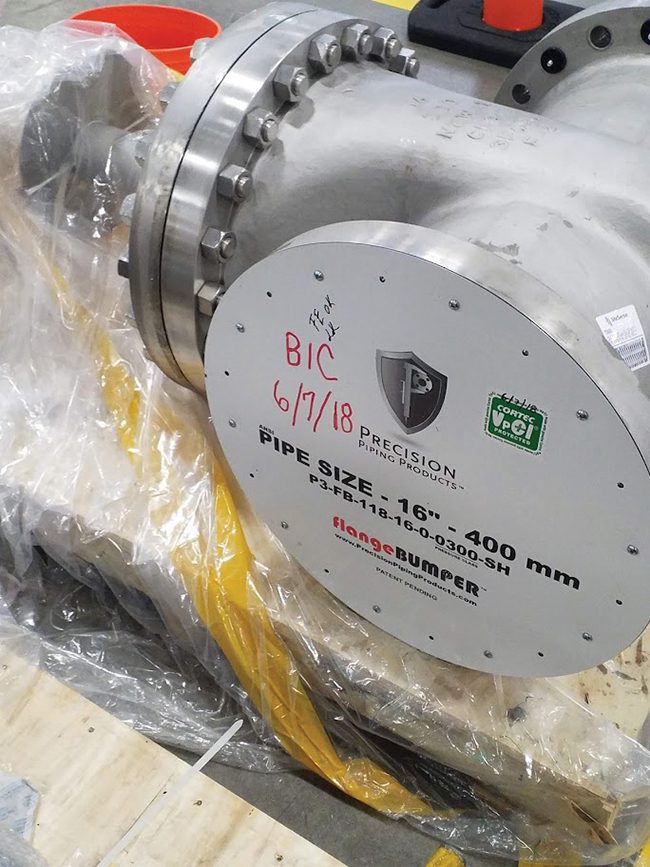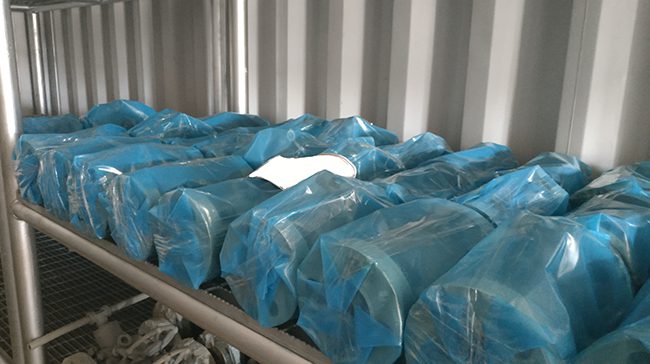The Added Value of Corrosion Protection for Pump and Valve Maintenance
Power plants depend on hundreds of valves and many different pumps to carry out operations 24/7. Good maintenance procedures—including routine tasks and predictive maintenance—are critical to keeping these assets online and functioning as smoothly as possible. Incorporating corrosion mitigation adds value to the process by targeting a significant risk factor before and after maintenance begins.
Good maintenance starts with proper preservation. In a very real way, good pump and valve maintenance starts at the manufacturing plant. What the manufacturer does or does not do to the valve can affect its performance and integrity down the road. For instance, if the manufacturer does not effectively preserve the valve, pockets of moisture can lead to corrosion weeks or years later, potentially reducing the valve’s useful life dramatically. On the other hand, good preservation at the outset can lead to pumps or valves that are still in good condition when maintenance goes to install them as spares two or three years later.
To ensure good protection, manufacturers should include anticorrosion measures at the time of hydrostatic testing, when high-pressure water surges through the system to check for leaks. When the water is drained, it unavoidably leaves behind pockets of residual moisture that can incite corrosion at any time. Adding a corrosion inhibitor (an example is Cortec’s VpCI-649) to the hydrotest water, protects against corrosion both during hydrotesting and (depending on the dosage of inhibitor used) for months or years after. Fogging the pump casing or valve port with a vapor phase corrosion inhibitor thereafter adds additional protection within the intricate void space as long as openings are capped.
 |
|
1. This image provides an example of what should NOT be done to protect valve and pump flanges during storage and transit. Plywood covers can trap moisture and encourage corrosion on sensitive flange surfaces. Courtesy: Precision Piping Products |
On the outside of the pump or valve, highly sensitive flange faces must be kept in prime condition for safety and effectiveness at installation. These surfaces are highly vulnerable to physical damage during shipping and handling. Unfortunately, a common mistake is to cover the flanges with plywood (Figure 1), which can actually cause corrosion by absorbing and holding moisture right next to the metal surface. Best practices, therefore, typically include protecting the clean flange face with a removable corrosion inhibitor coating (VpCI-389 and VpCI-391 are examples) and capping with a rigid plastic flange protector (Figure 2) to prevent physical damage and keep vapor phase corrosion inhibitors inside the valve. The pump or valve bodies can also be protected with a temporary coating if desired.
 |
|
2. An example of proper flange protection. A rigid, non-wood flange BUMPER from Precision Piping Products protects this sensitive surface against physical damage, which could compromise the integrity of the valve. The flange cover can also be used to help trap vapor phase corrosion inhibitor fogging fluid inside the void space for interim corrosion protection during storage and shipping. Courtesy: Precision Piping Products |
Once onsite, pumps and valves should be inspected before further processing. Precision Piping Products, a manufacturer of flange protectors, offers recommendations such as the following on its pump inspection form:
■ Make sure pump is stored on a flat, sound surface six inches above the ground and out of standing water (if outdoors).
■ Check for signs of damage on the equipment or crates.
■ Make sure covers and connections are properly sealed with protective products and fastened with at least 50% of the bolts or multi-nuts required.
■ Make sure shaft and coupling are painted with a product such as VpCI-368 or equivalent.
■ Apply CorrLube grease to grease fittings before shaft rotation.
■ Add vapor phase corrosion inhibitor additive to oil if pump is lubricated.
■ Make sure seal tabs are not in locking position.
■ pump shaft (this helps lubricate bearings, detect damage, and prevent bearing brinelling and shaft deflection).
 |
|
3. Storing clean valves in VpCI-126 film helps ensure they stay rust-free, ready to use at any time maintenance may need a replacement. Courtesy: Cortec |
After inspection, components can either be installed immediately or wrapped in a film such as VpCI-126 film to ensure maintenance can find ready-to-use spares when a replacement is needed (Figure 3).
Battling Rust in Routine Maintenance
Once a pump or valve has been installed, routine maintenance carries on as usual. Pumps and valves are serviced and repaired. Those with packing must have nuts periodically tightened (to reduce leakage on the packing glands) and new packing material installed as the old packing wears out. While some leakage is expected on packing glands, it can lead to serious problems at service junctures by causing rust on nuts and bolts. Sometimes, rust is so bad that it locks the nut in place, tempting the maintenance worker to put more pressure on it during adjustment. Unfortunately, this is one of the worst things to do, as the extra torque on the immovable nut may put so much pressure on the bolt that it breaks. If this happens, it means a simple maintenance task has suddenly turned into a big headache because the pump or valve will need to be taken offline for repair.
Instead of trying so hard to turn a rusted packing gland nut, the easy solution is to cut through the rust with a penetrating product such as Cortec VpCI Super Penetrant. This deep penetrating formulation allows the user to quickly penetrate through deep rust, displacing moisture and loosening the corrosion products. At the same time, it lubricates the metal parts, allowing them to move freely, while also leaving behind an ultra-thin corrosion inhibiting film for lingering protection. By spraying the rusty nuts and bolts of the packing gland with this product, maintenance crews can quickly cut through the rust that is locking the fasteners in place, allowing them to be loosened and adjusted as needed while avoiding breakage and further repair.
Those who want to add more biobased products to their maintenance portfolio can use EcoLine CLP, a U.S. Department of Agriculture (USDA)-certified biobased product. That means it contains at least 89% USDA-certified biobased content from renewables such as canola oil and canola methyl ester. This product lubricates, penetrates, and leaves behind a very persistent layer of protection for damp environments like those inside pumps and valves. Bolt loosening power is also good, according to one test that showed lower torque was needed to unscrew rusted nuts treated with this biobased product than to unscrew those treated with a widely used conventional penetrant/lubricant.
Predictive Maintenance
Another important part of everyday power plant operation is predictive maintenance for pumps and valves. William (Sonny) Reeves, current president at Cortec Global Services (CGSI) and an expert in preservation oversight, maintenance, and asset management in major oil and gas and other industrial projects, said this relies first on operators. Outside operators make a daily circuit to adjust valves and log a variety of readings such as pressure and flow. A board controller makes similar adjustments to automated valves while sitting at a computer. A reliability engineer can use these pump and valve readings to spot trends and predict when and what kind of maintenance might be needed.
Reeves provided several examples of how this could play out. For example, if a pump’s bearing temperatures increased by 10% over the last three months, this could signal the impending need for new bearings. Unusual vibration could indicate multiple problems, such as improper flow, wrong viscosity, or worn parts that are no longer running as smoothly as they once did. He said oil samples should be evaluated at least twice a year, which can give a reliability engineer valuable information such as moisture content and acidity of the oil, or possibly that parts are wearing abnormally if brass or other metal is found in a sample. Paying attention to these trends allows maintenance workers to fix the problem before an alarm goes off. Ignoring them could lead to more serious problems and interruptions.
While predictive maintenance is mission critical and should not be overlooked, introducing corrosion mitigation and preventative maintenance makes the plan more comprehensive and minimizes failures due to rust. Reeves therefore recommends also creating a preventative maintenance work order that calls for valve inspection and application of appropriate rust preventatives every six months.
One way to do preventative maintenance is with the simple “bucket and brush” method, in which maintenance goes around applying temporary or permanent coatings wherever they see a need. A coating such as CorrVerter Rust Converter Primer is especially handy because it can be used to passivate rusty surfaces where sandblasting is forbidden for safety reasons. This water-based primer can be top-coated with the plant’s standard paint or with a specialty anticorrosion coating. Any valve or pump surfaces that are unpainted but not rusty can be primed with an anticorrosion primer to get corrosion inhibitors as close to the surface as possible before following up with a topcoat.
Good pump and valve maintenance starts at the manufacturer with proper preservation and continues on through predictive and preventative maintenance. By introducing corrosion mitigation into the schema, power plants can add value to their maintenance activities for smoother operations and fewer unintended consequences from corrosion-related complications.
—Julie Holmquist ([email protected]) is marketing content writer at Cortec, a manufacturer of preservation products for valves, pumps, and many other industrial components; Jim Holden ([email protected]) is technical director—Energy & Engineered Solutions at Cortec; and Bob Boyle ([email protected]) is vice president—Integrity Management & Preservation Solutions at Cortec.